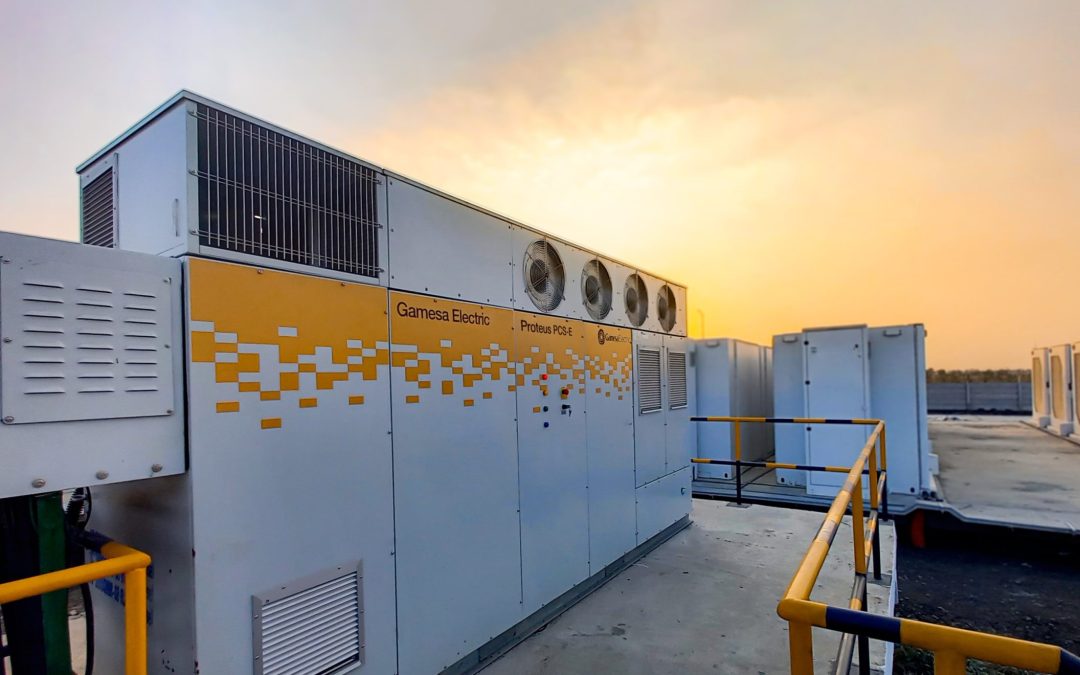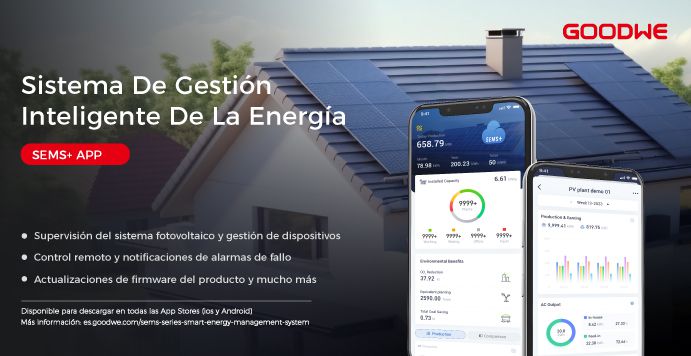12 units of Gamesa Electric Proteus PCS-E will be provided for the 50 MW/250 MWh North Star Junction battery energy storage system (BESS) project in Western Australia.












12 units of Gamesa Electric Proteus PCS-E will be provided for the 50 MW/250 MWh North Star Junction battery energy storage system (BESS) project in Western Australia.

For solar photovoltaic energy, the LCOE of fixed-axis systems averages $66/MWh globally, with a wide range from $28/MWh to $117/MWh, reflecting the influence of geography, technological advancements, and regional market conditions. Single-axis tracking photovoltaic systems perform slightly better, with an average of $60/MWh and a range from $31/MWh to $103/MWh, reinforcing their growing role in utility-scale projects.

HELAPCO, the Hellenic Association of Photovoltaic Companies, states that curtailments are expected to reach 1 TWh in 2024, representing 3.5% of total renewable energy production. They emphasize that between 7.5 GW and 8 GW of storage capacity is needed to address this issue. Additionally, they project surpassing the 2030 photovoltaic target of 13.5 GW and reaching 20 GW of installed capacity.

With 483.2 MW signed in September 2024, primarily driven by corporates and a growing interest from the pharmaceutical industry, a 16% decrease in solar PPA prices and stability in wind contracts stand out.

This system enables remote monitoring, management, and optimization of photovoltaic installations, with advanced security and automatic firmware updates.

Following the inclusion of the project in the MAPs in April, Red Eléctrica initiated its processing and has since undertaken significant efforts, now enabling the imminent commencement of construction.

The latest SotySolar report reveals that solar self-consumption faces economic, bureaucratic, and perception barriers. In an interview with *Energía Estratégica España*, Montserrat Lavilla stated that despite incentives and long-term savings, it is necessary to simplify processes and raise awareness.

Kornel Koronowski, Head of Origination Poland at Statkraft, highlights how the demand for sustainable energy solutions is driving significant PPAs. Additionally, according to the Pexapark report, PPA prices in Poland dropped by 0.2%, reflecting growing competition in the sector.

According to an analysis conducted by Energía Estratégica España, between September and the first weeks of October, 2,837.7 MW advanced in environmental processing from 34 projects. Of the total, 1,078.4 MW correspond to agrovoltaic energy and 1,005 MW to offshore wind energy, while the remainder is divided between onshore wind and photovoltaic energy.

Iberdrola, Enel Green Power, and X-ELIO lead the largest renewable energy projects in Spain. Among the most notable are the Francisco Pizarro and Lorca Solar photovoltaic parks, and the Santuario wind farm, which will drive the new installed capacity over the next three years.

It is a project consisting of five photovoltaic plants with a total capacity of 248 MWp, as well as an electricity transmission project in the Seville towns of Guillena, Burguillos, and Alcalá del Río.

EiDF has increased its equity by more than 42 million euros and has maintained a clearly positive working capital in the first 6 months of the year, as well as reducing its financial debt by more than 78% since December 2022.

The CNMC resolution modifies the electricity market settlement to 15-minute intervals. This measure aims to improve efficiency in managing deviations. From the renewable sector, it is seen as a positive opportunity, although it involves technological adaptation efforts.

The most sought-after profiles in the renewable energy sector vary by region, mainly between engineers and sales professionals. Technical and commercial positions offer the most competitive salaries, ranging from €45,000 to €50,000 annually, with engineers earning over €50,000.

3E is betting on photovoltaic projects, hybridization with wind, and standalone storage, driven by the recent construction permits in Spain. Additionally, the company plans to expand internationally, with particular interest in Latin America and new technologies such as green hydrogen, although the latter still requires technical and economic advancements.

Michal Smyk, Country Manager of Statkraft in Poland, highlights the company’s commitment in a country where 73% of energy comes from fossil fuels. Despite regulatory challenges, Statkraft’s strategy is to become a key player in the energy landscape.

The General Director of UNEF, José Donoso, highlighted during the event’s closing that “our country spends around 60 billion euros a year on importing hydrocarbons. The year we achieve total decarbonization will be like having a Next Generation investment every year for our economy with our internal resources.”

From infrastructure modernization to the adoption of renewable energy, Central Europe has the opportunity to redefine its energy future. However, this path entails geopolitical and economic challenges that will require strategic vision and international collaboration to ensure an effective transition.

The PPA market in Portugal has experienced strong growth, driven by the energy transition towards carbon neutrality. According to Hugo Silva from TreeEnergy, the solar sector is leading this development, with long-term contracts that ensure competitive prices and energy stability.

The Ministry of Industry published the provisional resolution for grants to companies such as Repsol Petróleo, Smurfit Kappa Navarra, and Votorantim Cementos, compensating their high energy consumption and promoting the use of renewable energy in 2024.

The Secretary of Energy, Sara Aagesen, announced the opening of the public consultation for Royal Decree 244/2019, which aims to gather extensive feedback from the sector. In this regard, some of the requested modifications include facilitating access to the grid, eliminating the connection radius for energy communities, and creating a one-stop shop.


12 units of Gamesa Electric Proteus PCS-E will be provided for the 50 MW/250 MWh North Star Junction battery energy storage system (BESS) project in Western Australia.

For solar photovoltaic energy, the LCOE of fixed-axis systems averages $66/MWh globally, with a wide range from $28/MWh to $117/MWh, reflecting the influence of geography, technological advancements, and regional market conditions. Single-axis tracking photovoltaic systems perform slightly better, with an average of $60/MWh and a range from $31/MWh to $103/MWh, reinforcing their growing role in utility-scale projects.

HELAPCO, the Hellenic Association of Photovoltaic Companies, states that curtailments are expected to reach 1 TWh in 2024, representing 3.5% of total renewable energy production. They emphasize that between 7.5 GW and 8 GW of storage capacity is needed to address this issue. Additionally, they project surpassing the 2030 photovoltaic target of 13.5 GW and reaching 20 GW of installed capacity.

With 483.2 MW signed in September 2024, primarily driven by corporates and a growing interest from the pharmaceutical industry, a 16% decrease in solar PPA prices and stability in wind contracts stand out.

This system enables remote monitoring, management, and optimization of photovoltaic installations, with advanced security and automatic firmware updates.

Following the inclusion of the project in the MAPs in April, Red Eléctrica initiated its processing and has since undertaken significant efforts, now enabling the imminent commencement of construction.

The latest SotySolar report reveals that solar self-consumption faces economic, bureaucratic, and perception barriers. In an interview with *Energía Estratégica España*, Montserrat Lavilla stated that despite incentives and long-term savings, it is necessary to simplify processes and raise awareness.

Kornel Koronowski, Head of Origination Poland at Statkraft, highlights how the demand for sustainable energy solutions is driving significant PPAs. Additionally, according to the Pexapark report, PPA prices in Poland dropped by 0.2%, reflecting growing competition in the sector.

According to an analysis conducted by Energía Estratégica España, between September and the first weeks of October, 2,837.7 MW advanced in environmental processing from 34 projects. Of the total, 1,078.4 MW correspond to agrovoltaic energy and 1,005 MW to offshore wind energy, while the remainder is divided between onshore wind and photovoltaic energy.

Iberdrola, Enel Green Power, and X-ELIO lead the largest renewable energy projects in Spain. Among the most notable are the Francisco Pizarro and Lorca Solar photovoltaic parks, and the Santuario wind farm, which will drive the new installed capacity over the next three years.

It is a project consisting of five photovoltaic plants with a total capacity of 248 MWp, as well as an electricity transmission project in the Seville towns of Guillena, Burguillos, and Alcalá del Río.

EiDF has increased its equity by more than 42 million euros and has maintained a clearly positive working capital in the first 6 months of the year, as well as reducing its financial debt by more than 78% since December 2022.

The CNMC resolution modifies the electricity market settlement to 15-minute intervals. This measure aims to improve efficiency in managing deviations. From the renewable sector, it is seen as a positive opportunity, although it involves technological adaptation efforts.

The most sought-after profiles in the renewable energy sector vary by region, mainly between engineers and sales professionals. Technical and commercial positions offer the most competitive salaries, ranging from €45,000 to €50,000 annually, with engineers earning over €50,000.

3E is betting on photovoltaic projects, hybridization with wind, and standalone storage, driven by the recent construction permits in Spain. Additionally, the company plans to expand internationally, with particular interest in Latin America and new technologies such as green hydrogen, although the latter still requires technical and economic advancements.

Michal Smyk, Country Manager of Statkraft in Poland, highlights the company’s commitment in a country where 73% of energy comes from fossil fuels. Despite regulatory challenges, Statkraft’s strategy is to become a key player in the energy landscape.

The General Director of UNEF, José Donoso, highlighted during the event’s closing that “our country spends around 60 billion euros a year on importing hydrocarbons. The year we achieve total decarbonization will be like having a Next Generation investment every year for our economy with our internal resources.”

From infrastructure modernization to the adoption of renewable energy, Central Europe has the opportunity to redefine its energy future. However, this path entails geopolitical and economic challenges that will require strategic vision and international collaboration to ensure an effective transition.

The PPA market in Portugal has experienced strong growth, driven by the energy transition towards carbon neutrality. According to Hugo Silva from TreeEnergy, the solar sector is leading this development, with long-term contracts that ensure competitive prices and energy stability.

The Ministry of Industry published the provisional resolution for grants to companies such as Repsol Petróleo, Smurfit Kappa Navarra, and Votorantim Cementos, compensating their high energy consumption and promoting the use of renewable energy in 2024.

The Secretary of Energy, Sara Aagesen, announced the opening of the public consultation for Royal Decree 244/2019, which aims to gather extensive feedback from the sector. In this regard, some of the requested modifications include facilitating access to the grid, eliminating the connection radius for energy communities, and creating a one-stop shop.
Select the sector you
want to know more about

Spain has more than 28 GW of offshore wind capacity in environmental processing, awaiting the ministerial order that will define the rules and calendar for auctions. Industry giants such as Repsol, Iberdrola, BlueFloat, Cobra and Capital Energy lead the way.

Interesados podrán adquirir bases e inscribirse a partir del 26 de septiembre de 2025, conforme a la normativa vigente del sector eléctrico chileno.

Interested parties may acquire bidding documents and register starting September 26, 2025, in accordance with current Chilean electricity sector regulations.